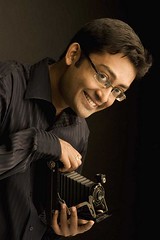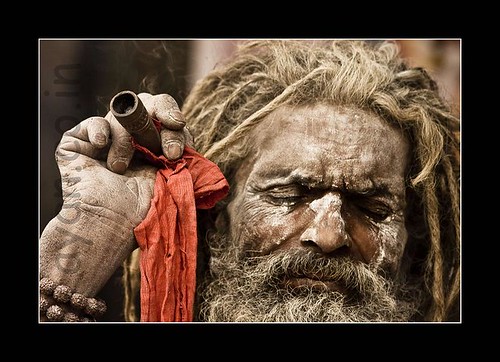Om Namah Shivaya
For couple of weeks, I got busy with work and could not manage much time for shooting. Last weekend I was fully determined to do something. This time pilgrims from all over India come down to Kolkata to start for Ganga sagar. The place is some 150 Km down south further. Many people call this place Sagar island. It is big, around 300 sq km. As per wiki, Gangasagar pilgrimage and fair is the second largest congregation of mankind after the holy Kumbha Mela.
In Kolkata, government builds a transit camp for the Sadhus and pilgrims every year. That place is frequented by photographers every day. It has a different charm. Lot of people, mostly from Northern and eastern part of India. Many people come from adjacent states like Bihar. This is a yearly event and they long for it throughout the year.
I got the following passage from (here) :
“The village priest leading his horde of devotees chants Sab teerth baar baar, Ganga Sagar ek bar. You can go to all the holy places, but a pilgrimage to Ganga Sagar equals them all. A dip means redemption for all wrong done. This place is Sagar Island, on the confluence of the Ganga with the Bay of Bengal. The day “Makar Sankranti” or the last day of the month of Paus (December).
Legend has it that, before joining the sea, the Ganga watered the mortal remains of King Sagar’s 60000 sons liberating their souls once and forever. It was standing on the Sagar Island that the mythical Kapil Muni condoned th sins of the sons of King Sagar who had dared to stop the horse blessed at Lord Indra’s Aswamedha Yagna and tied it to a post near his temple. It is this legend that attracts people to this little island in a remote southern corner of West Bengal.
The Ganga Sagar mela (fair) is the largest annual assemblage of devotees in India. The greatness of the mela can be assessed from the fact that over a million pilgrims come from far-flung corners of India and beyond, speaking different languages and belonging to diverse castes and creeds, for a sacred dip at this holy confluence. For this, no invitation is given. No propaganda is carried out and overall no authority exists for carrying out the mela.
It is indeed a tough journey. A few days in packed buses and trains bring the pilgrims to Calcutta (Kolkata). From there, again a long bus journey to ferry ghats or jetty in Sunderbans area, followed by crossing the tidal river stretching for miles across. The last leg involves either walking or traveling by a local bus upto 30 kilometres depending on the location of embarkation point. ”
Coming back, in the transit camp there are small and medium sized hudrends of groups sitting in a line in a proper fashion. Sadhus were attracting crowd, telling them philosophies about life. I was there for around 5 hours and saw them smoking cannabis continuously. Now this is very interesting. Wiki says: Cannabis has an ancient history of ritual usage as an aid to trance and has been traditionally used in a religious context throughout the old world. Herodotus wrote about early ceremonial practices by the Scythians, which are thought to have occurred from the 5th to 2nd century BC. In India, it has been engaged by itinerant sadhus for centuries, and in modern times the Rastafari movement has embraced it. Anthropologist Sula Benet claimed historical evidence and etymological comparison show that the Holy anointing oil used by the Hebrews contained cannabis extracts, kaneh bosm and that it is also listed as an incense tree in the original Hebrew and Aramaic texts of the Old Testament. The early Christians used cannabis oil for medicinal purposes and as part of the baptismal process to confirm the forgiveness of sins and right of passage into the Kingdom of Heaven. The Unction, Seal, laying on of hands, the Counselor, and the Holy spirit are all often synonymous of the Holy anointing oil. Early Gnostic texts indicate that the Chrism is essential to becoming a Christian. Some Muslims of the Sufi order have used cannabis as a tool for spiritual exploration.
For the first time I also saw Aghoris at a close distance. I had seen them in photographs before but got chance to talk to them this time. Aghori ascetics, while being devotees of the Hindu God Shiva, are monists who adhere to the common Hindu belief in liberation (moksha) from the cycle of reincarnation (samsara). This liberation is a realization of the self’s identity with the absolute. Because of this monistic doctrine, the Aghoris maintain that all opposites are ultimately illusory. The purpose of embracing pollution through various practices is the realization of non-duality through transcending social taboos, and seeing the illusory nature of all conventional categories.
In essence, Aghoris base their beliefs on two principles. First, that Lord Shiva is perfect. Second, that Shiva is responsible for everything; every rock, tree, animal, and even every thought. Due to this, everything that exists must be perfect, and to deny the perfection of anything would be to deny the Gods.
The Aghori ascetic is himself a symbol of the God Shiva. He goes naked or wears the shroud of a corpse, he covers himself in the ashes of the cremation ground. The corpse upon which he meditates is a symbol of his own body and the corpse devouring ritual is a symbol of the transcendence of his lower self and a realisation of the greater, all pervading self.
The Aghoris distinguish themselves from other Hindu sects and priests by their alcoholic and cannibalistic rituals. The corpses, which may be either pulled from a river [including Ganges] or obtained from cremation grounds, are consumed raw as the Aghoris believe that what others consider as a "dead man" is, in fact, nothing but a natural matter devoid of the life force it once contained. Therefore, while for ordinary folks it may be called cannibalism, for them it’s using what is useless for the rest of the world. In fact, they claim to be scientists trying to discover how matter converts from one form to another.
Mostly the Sadhus were very cooperative with photographers. We met one sadhu who owns a car and travelled a long distance from Kerala to make it to here. He had a camcorder too! In all, it was completely a different experience altogether, probably you get to see these things only in India. Met Rob who came from Latin America; he was in awe. He said that he would be staying for one whole week to observe them. Good luck Rob. ![]()
You’re currently reading “Om Namah Shivaya”, an entry on PrEsEnCe
- Published:
- 01.14.09 / 10pm
- Category:
- Wanderer
- Post Navigation:
- « ||One weekend with Friends||
Casual stroll by the riverside »



